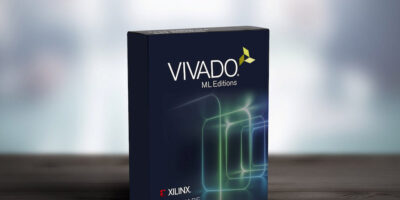The Vivado ML Editions deliver compile time that is five times faster than current Vivado HLx Editions. It also improves “breakthrough quality of results (QoR) improvements” of, on average, 10 per cent on complex designs, says Xilinx.
Vivado ML Editions also has team-based design flows, for significant design time and cost savings.
Vivado ML Editions accelerate design closure with ML-based logic optimisation, delay estimation and intelligent design runs, which automates strategies to reduce timing closure iterations.
According to Robert Atkinson, principal hardware engineer, National Instruments: “By offering a push-button method for aggressively improving timing results, [Vivado ML Editions] generates QoR suggestions that bring maximum impact and deliver expert quality results with a reduction in user analysis – especially for tough to close designs.”
Xilinx is also introducing the concept of an Abstract Shell, which allows users to define multiple modules within the system to be compiled incrementally and in parallel. This enables an average compile time reduction of five to 17 times, compared to traditional full system compilation, claims Xilinx. Abstract Shell also helps protect a customer’s IP by hiding the design details outside of the modules, critical for applications like FPGA-as-a-Service and value-added system integrators.
Vivado ML Editions also improves collaborative design with Vivado IP Integrator, which enables modular design using the new “block design container” feature. This capability promotes a team-based design methodology and allows a team to divide a project for multi-site, simultaneous co-operation.
Adaptability features like Dynamic Function eXchange (DFX) enable more efficient use of silicon resources by loading custom hardware accelerators, dynamically at runtime over-the-air. DFX can load design modules in a few milliseconds, which opens up new use cases such as a car swapping different vision algorithms during processing of a frame, or a genomic analysis swapping different algorithms in real-time as it sequences DNA.
Vivado ML Editions is available now in a Standard Edition at no charge and an Enterprise Edition starting at $2,995 MSRP.







